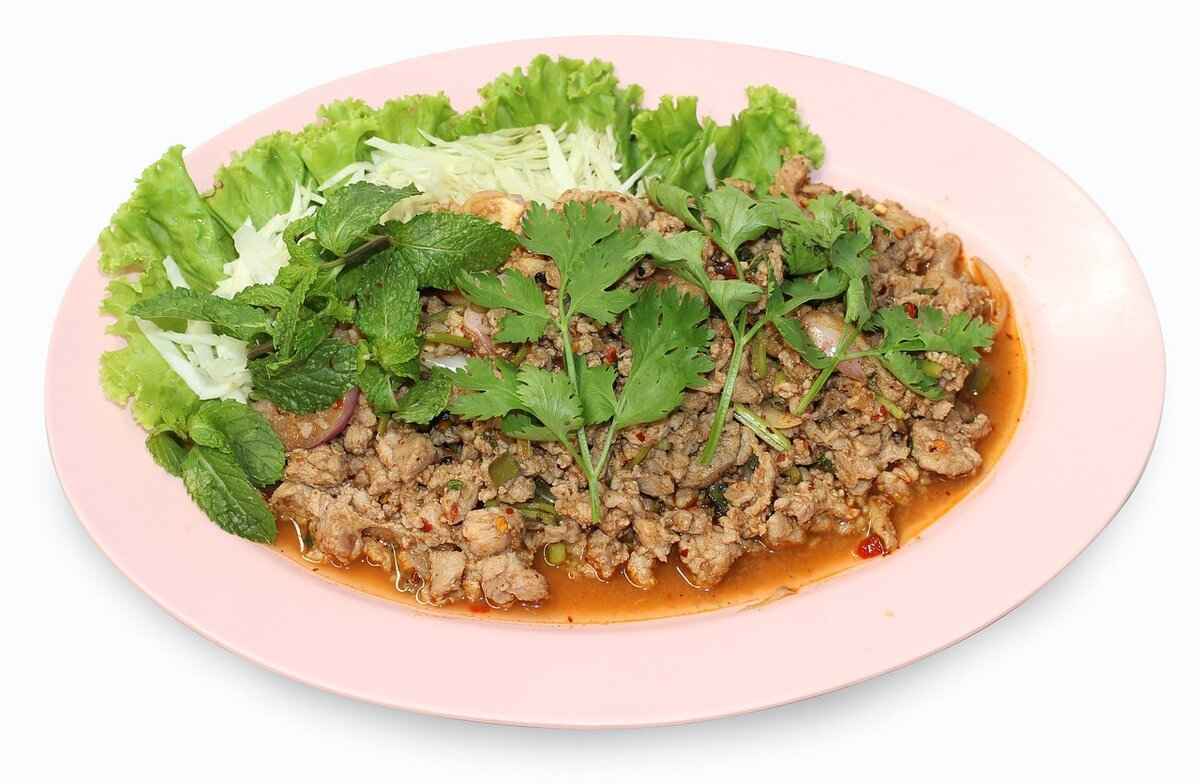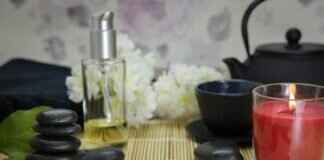This article delves into the latest trends in Asian massage techniques, their historical significance, and the various health benefits they offer to enhance well-being and relaxation.
What is Asian Massage?
Asian massage encompasses a variety of traditional practices originating from countries such as China, Japan, and Thailand. These techniques focus on holistic healing, emphasizing the importance of touch and manipulation to enhance both physical and mental wellness.
The Rise of Thai Massage
Thai massage has seen a surge in global popularity, renowned for its unique blend of stretching and acupressure techniques. This form of massage not only promotes relaxation but also serves as a full-body workout, enhancing flexibility and overall vitality.
History of Thai Massage
Rooted in ancient healing practices, Thai massage integrates elements of yoga and Ayurveda. It emphasizes the concept of energy lines within the body, aiming to restore balance and vitality.
Key Techniques in Thai Massage
Practitioners utilize a series of rhythmic movements, gentle stretching, and targeted pressure points to alleviate tension and improve circulation, resulting in a profoundly therapeutic experience.
Health Benefits of Thai Massage
- Alleviates stress
- Enhances flexibility
- Reduces muscle pain
These benefits contribute significantly to overall physical and mental well-being.
Comparing Shiatsu and Acupressure
Shiatsu, a Japanese technique, and acupressure from traditional Chinese medicine both utilize finger pressure on specific points to promote healing and relaxation.
Benefits of Shiatsu Massage
Shiatsu aims to restore harmony within the body by focusing on energy flow, effectively reducing stress and improving health through targeted pressure techniques.
Shiatsu Techniques Explained
Using palms, thumbs, and elbows, practitioners apply pressure along energy meridians, enhancing circulation and alleviating tension throughout the body.
Health Effects of Shiatsu
Research indicates that Shiatsu can lower anxiety levels, improve sleep quality, and alleviate chronic pain, making it an essential addition to wellness routines.
The Popularity of Chinese Tui Na
Tui Na is emerging as a globally recognized therapeutic massage technique that combines acupressure, stretching, and joint manipulation to foster healing and relaxation.
Understanding Tui Na
This practice focuses on the body’s energy channels, employing various hand techniques to stimulate circulation and alleviate pain, thus providing a holistic approach to health.
Health Benefits of Tui Na
- Reduces muscle tension
- Enhances mobility
- Improves recovery from injuries
Research supports Tui Na’s effectiveness as a valuable therapeutic option.

What is Asian Massage?
Asian massage is a rich tapestry of healing practices that originate from various cultures across Asia, particularly from countries such as China, Japan, and Thailand. These traditional techniques are deeply rooted in the philosophy of holistic healing, which emphasizes the interconnectedness of the body, mind, and spirit. The primary goal of Asian massage is to enhance overall wellness through the artful application of touch and manipulation, promoting not only physical recovery but also mental relaxation.
At its core, Asian massage is about restoring balance within the body. Each technique is designed to target specific areas of tension and energy flow, often referred to as Qi in Chinese medicine and Ki in Japanese practice. By addressing these energy pathways, practitioners aim to facilitate healing, relieve stress, and improve overall health.
There are numerous styles of Asian massage, each with its unique methods and benefits. For instance, Shiatsu employs rhythmic pressure on points along the body’s meridians, while Tui Na incorporates a combination of acupressure and therapeutic movements. Thai massage, on the other hand, integrates yoga-like stretches with deep tissue manipulation, offering a comprehensive approach to relaxation and rejuvenation.
- Holistic Healing: Each technique aims to treat the whole person, not just symptoms.
- Stress Reduction: Regular sessions can significantly lower stress levels and promote mental clarity.
- Improved Flexibility: Many Asian massage styles enhance physical flexibility and range of motion.
- Pain Relief: Targeted techniques can alleviate chronic pain and muscle tension.
In summary, Asian massage is a profound practice that offers numerous health benefits through its diverse techniques. It is an invitation to explore ancient wisdom that continues to resonate in our modern world, making it a valuable addition to any wellness routine.

The Rise of Thai Massage
Thai massage, known for its distinctive approach, has recently captured the attention of wellness enthusiasts around the globe. This ancient practice, which seamlessly blends stretching and acupressure, offers a unique experience that goes beyond mere relaxation. By engaging multiple muscle groups, it effectively provides a full-body workout while promoting both relaxation and flexibility.
Originating from Thailand, this massage style is rooted in centuries-old traditions that emphasize the importance of energy flow within the body. Practitioners believe that by manipulating specific points and stretching the body, they can help restore balance and vitality. This holistic approach not only addresses physical discomfort but also contributes to mental clarity and emotional well-being.
One of the key aspects of Thai massage is its incorporation of yoga-like stretches. These movements are designed to open up the body, increase blood circulation, and enhance overall flexibility. As the therapist applies pressure to various acupressure points, clients often report a profound sense of release from tension and stress. This combination of stretching and pressure techniques is what sets Thai massage apart from other forms of massage therapy.
| Benefits of Thai Massage | Description |
|---|---|
| Stress Relief | Helps alleviate mental and physical stress through relaxation techniques. |
| Increased Flexibility | Enhances the range of motion by stretching muscles and joints. |
| Pain Reduction | Relieves muscle tension and chronic pain through targeted pressure. |
| Improved Circulation | Boosts blood flow, promoting overall health and vitality. |
As more individuals seek natural and holistic methods for health improvement, the popularity of Thai massage continues to rise. Whether one is looking for a way to unwind, enhance physical performance, or simply explore a new form of therapy, Thai massage offers a comprehensive solution that caters to a variety of needs.
History of Thai Massage
Thai massage is a profound practice that has evolved over centuries, deeply rooted in the traditions of ancient healing arts. Its origins can be traced back to the teachings of Jivaka Kumar Bhaccha, a physician to the Buddha, who integrated elements from various disciplines, including Ayurveda and traditional Chinese medicine. This ancient form of bodywork emphasizes the importance of energy lines, known as Sen lines, which are believed to be pathways for energy flow within the body.
Unlike other forms of massage that primarily focus on muscle manipulation, Thai massage employs a unique combination of yoga-like stretches and acupressure techniques. The practitioner uses their hands, feet, elbows, and knees to apply pressure and stretch the body, promoting both physical and mental well-being. This holistic approach not only addresses physical ailments but also aims to restore emotional balance.
Throughout its history, Thai massage has been influenced by various cultures and philosophies, leading to its rich and diverse practice. It has been practiced in temples and monasteries, where monks would use it as a means of healing and spiritual development. Today, it has transcended its traditional roots and gained global recognition, becoming a popular choice for those seeking relaxation and rejuvenation.
Moreover, the practice of Thai massage is often accompanied by the use of herbal remedies and essential oils, enhancing its therapeutic effects. As individuals increasingly seek natural and holistic treatments, the demand for Thai massage continues to grow, making it a significant part of wellness routines worldwide.
In summary, the history of Thai massage reflects a blend of ancient wisdom and modern practices, highlighting its enduring relevance in promoting health and vitality.
Key Techniques in Thai Massage
Thai massage is renowned for its unique approach that blends traditional techniques with modern wellness practices. involve a series of rhythmic movements, gentle stretching, and targeted pressure points. These methods are designed to release tension and improve circulation, transforming the massage into a deeply therapeutic experience.
- Rhythmic Movements: Practitioners employ flowing movements that mimic yoga poses, allowing the body to naturally stretch and align. This rhythmic approach not only relaxes muscles but also enhances flexibility.
- Gentle Stretching: The incorporation of gentle stretches helps to open up tight muscles and joints. This technique is particularly beneficial for individuals who may experience stiffness or discomfort due to sedentary lifestyles.
- Pressure Points: By applying pressure to specific points along the body’s energy lines, practitioners stimulate circulation and promote the release of endorphins. This targeted approach helps alleviate pain and tension, providing immediate relief.
One of the most significant advantages of these techniques is their ability to enhance overall well-being. Regular sessions can lead to improved physical health, increased energy levels, and a profound sense of relaxation. Additionally, the holistic nature of Thai massage encourages mental clarity and emotional balance.
Furthermore, the integration of breathing techniques during the massage enhances the experience. Clients are encouraged to focus on their breath, which not only aids in relaxation but also helps to deepen the effects of the massage. This mindful practice fosters a connection between body and mind, making each session more impactful.
In summary, the key techniques in Thai massage—rhythmic movements, gentle stretching, and pressure point application—combine to create a unique therapeutic experience. These methods not only relieve physical tension but also promote mental and emotional well-being, making Thai massage a valuable addition to any wellness routine.
Health Benefits of Thai Massage
Thai massage is not only a unique form of therapy but also a powerful tool for enhancing well-being. One of the most significant aspects of this practice is its ability to provide various health benefits that contribute to both physical and mental wellness.
Regular sessions of Thai massage can be instrumental in alleviating stress. In today’s fast-paced world, stress has become a common issue that affects individuals of all ages. The gentle yet firm techniques employed in Thai massage help to relax the mind and body, leading to a profound sense of calm and tranquility.
Moreover, Thai massage enhances flexibility significantly. The incorporation of stretching techniques allows the body to achieve a greater range of motion, which is essential for maintaining physical health. Improved flexibility can also prevent injuries and contribute to better athletic performance.
Another noteworthy benefit is the reduction of muscle pain. Many individuals suffer from chronic pain due to various reasons, including poor posture, sedentary lifestyles, or strenuous physical activity. Thai massage targets specific muscle groups, releasing tension and promoting relaxation. This not only helps in alleviating existing pain but also aids in recovery from muscle fatigue.
In addition to these physical benefits, Thai massage also contributes to overall mental well-being. By promoting relaxation and reducing anxiety levels, it can improve mood and enhance emotional stability. This holistic approach to health ensures that both the body and mind are nurtured, leading to a balanced state of being.
To summarize, the health benefits of Thai massage are extensive. From alleviating stress and enhancing flexibility to reducing muscle pain, regular sessions can significantly contribute to overall physical and mental well-being. Incorporating Thai massage into your wellness routine can lead to lasting improvements in your quality of life.
Comparing Shiatsu and Acupressure
Shiatsu, a traditional Japanese massage technique, and acupressure, which originates from ancient Chinese medicine, share a common foundation in their approach to healing. Both practices utilize finger pressure on specific points of the body to stimulate energy flow and promote relaxation. However, they differ in their methodologies and underlying philosophies.
Shiatsu, which translates to “finger pressure,” is deeply rooted in the principles of Zen Buddhism and the concept of Qi (or vital energy). Practitioners apply pressure using their fingers, palms, and sometimes elbows along the body’s energy meridians. This technique not only aims to relieve physical tension but also seeks to restore emotional balance by enhancing the body’s natural healing processes.
On the other hand, acupressure is based on the same principles as acupuncture, yet it does not involve needles. Instead, it employs manual pressure to activate acupuncture points, facilitating the flow of Qi throughout the body. This method is often used to address specific ailments such as headaches, digestive issues, and stress-related conditions.
| Feature | Shiatsu | Acupressure |
|---|---|---|
| Origin | Japan | China |
| Technique | Finger, palm, and elbow pressure | Manual pressure on acupuncture points |
| Focus | Energy meridians and emotional balance | Specific ailments and Qi flow |
| Benefits | Stress relief, improved circulation, emotional harmony | Pain relief, enhanced relaxation, improved digestion |
In summary, while both Shiatsu and acupressure utilize finger pressure to promote healing, their techniques and focuses differ significantly. Shiatsu emphasizes a holistic approach to well-being, integrating physical and emotional health, whereas acupressure tends to concentrate on treating specific health issues. Understanding these distinctions can help individuals choose the right therapy to suit their personal health needs.

Benefits of Shiatsu Massage
Spa and wellness enthusiasts are increasingly turning to Shiatsu massage for its holistic benefits. This traditional Japanese technique is designed to enhance the body’s natural energy flow, known as Qi, and restore balance within. By utilizing targeted pressure techniques, Shiatsu effectively promotes relaxation and overall well-being.
At its core, Shiatsu is rooted in the principles of traditional Chinese medicine. Practitioners believe that energy flows through specific pathways in the body, and any blockages can lead to physical and emotional distress. Shiatsu aims to alleviate these blockages by applying pressure to key points along the body’s meridians, thereby enhancing circulation and promoting the flow of energy.
- Stress Reduction: One of the primary benefits of Shiatsu is its ability to reduce stress levels. The gentle yet firm pressure applied during a session encourages deep relaxation, allowing the body to release accumulated tension.
- Improved Sleep: Many individuals report better sleep quality after receiving Shiatsu treatments. By calming the nervous system and reducing anxiety, this massage technique can help individuals achieve more restful nights.
- Pain Relief: Shiatsu is particularly effective for alleviating chronic pain conditions, such as back pain, headaches, and joint discomfort. By targeting specific pressure points, practitioners can help reduce inflammation and promote healing.
- Enhanced Flexibility: The stretching techniques used in Shiatsu not only relieve tension but also improve flexibility and range of motion, making it an excellent choice for athletes and those with physically demanding lifestyles.
Incorporating Shiatsu into your wellness routine can lead to significant improvements in both physical and mental health. As more individuals seek natural, non-invasive methods for enhancing their well-being, Shiatsu stands out as a powerful tool for achieving a balanced and harmonious life.
Shiatsu Techniques Explained
Simplistically defined, Shiatsu is a form of Japanese massage that harnesses the energy flow within the body. Practitioners utilize their palms, thumbs, and elbows to apply targeted pressure along specific energy meridians, known as meridians, which are pathways that facilitate the flow of Qi (energy). This method not only enhances circulation but also alleviates tension throughout the body, promoting a profound sense of relaxation and well-being.
The application of pressure in Shiatsu is not arbitrary; it follows a systematic approach that aligns with the body’s energy channels. The practitioner often begins by assessing the client’s overall energy balance, identifying areas of blockage or tension that require attention. By focusing on these areas, Shiatsu aims to restore harmony and balance within the body.
- Pressure Techniques: The pressure applied can vary from gentle to firm, depending on the client’s needs and comfort level. This versatility allows practitioners to tailor each session to the individual’s unique condition.
- Stretching Movements: Shiatsu often incorporates stretching movements that help to enhance flexibility and alleviate stiffness. These stretches are designed to complement the pressure techniques, creating a comprehensive therapeutic experience.
- Breath Awareness: Practitioners encourage clients to engage in deep breathing during the session, which further enhances relaxation and promotes the effective flow of energy.
Moreover, Shiatsu is rooted in principles of traditional Chinese medicine, emphasizing the connection between body, mind, and spirit. This holistic approach not only targets physical ailments but also addresses emotional and psychological well-being. As a result, many individuals report feeling rejuvenated and more centered after a Shiatsu session.
In summary, Shiatsu techniques involve a combination of pressure application, stretching, and breath awareness, all aimed at improving energy flow and promoting overall health. This ancient practice continues to gain recognition for its profound effects on both physical and mental wellness.
Health Effects of Shiatsu
Shiatsu, a traditional Japanese massage technique, has garnered attention for its numerous health benefits, particularly in the realm of mental and physical well-being. As more individuals seek holistic approaches to health, the importance of Shiatsu in wellness routines cannot be overstated.
Lowering Anxiety Levels
One of the most significant health effects of Shiatsu is its ability to reduce anxiety levels. By applying pressure to specific points along the body’s energy pathways, Shiatsu promotes relaxation and helps to release pent-up tension. This practice encourages the body to enter a state of calm, which can lead to improved mental clarity and emotional stability.
Improving Sleep Quality
In addition to alleviating anxiety, Shiatsu is known to enhance sleep quality. Regular sessions can help regulate sleep patterns by addressing underlying issues such as stress and muscle tension. Many practitioners report that their clients experience deeper, more restorative sleep after incorporating Shiatsu into their wellness routines.
Alleviating Chronic Pain
Chronic pain is a common ailment that affects millions of people worldwide. Shiatsu offers a non-invasive method to alleviate chronic pain through targeted pressure techniques. By focusing on specific areas of discomfort, Shiatsu can enhance blood circulation, reduce inflammation, and promote overall healing, making it a valuable tool for pain management.
Enhancing Overall Wellness
Beyond its immediate effects on anxiety, sleep, and pain, Shiatsu contributes to overall wellness by restoring balance within the body. This technique encourages the flow of energy, or “ki,” which is essential for maintaining health. As a result, individuals often report feeling more energized and balanced after sessions.
In summary, the health effects of Shiatsu extend far beyond mere relaxation. With its ability to lower anxiety, improve sleep quality, and alleviate chronic pain, Shiatsu stands out as a powerful addition to any wellness routine.

The Popularity of Chinese Tui Na
Tui Na, a traditional Chinese therapeutic massage technique, is rapidly gaining popularity across the globe. This ancient practice integrates elements of acupressure, stretching, and joint manipulation, making it a comprehensive approach to healing and relaxation. Unlike many Western massage techniques that focus primarily on muscle relaxation, Tui Na emphasizes the flow of Qi (or energy) throughout the body, addressing both physical and emotional well-being.
What Makes Tui Na Unique?
Tui Na is distinguished by its use of various hand techniques that stimulate specific acupressure points. These techniques are designed to improve circulation, relieve pain, and promote overall health. Practitioners often incorporate stretching and joint manipulation to enhance mobility and flexibility, making it particularly effective for individuals recovering from injuries or experiencing chronic pain.
Health Benefits of Tui Na
- Reduces Muscle Tension: Tui Na effectively targets tight muscles, providing relief and enhancing relaxation.
- Enhances Mobility: The stretching techniques used in Tui Na help improve joint flexibility and range of motion.
- Promotes Recovery: Regular sessions can accelerate recovery from injuries by boosting blood flow and reducing inflammation.
- Balances Energy: By focusing on the body’s energy channels, Tui Na aims to restore harmony and balance, contributing to mental clarity and emotional stability.
Why is Tui Na Becoming More Popular?
The increasing interest in holistic health and wellness has contributed to the rise of Tui Na. As more individuals seek natural and non-invasive therapies, Tui Na stands out for its ability to address a wide range of health concerns. Furthermore, its integration into wellness centers and spas worldwide has made this traditional practice more accessible to a global audience.
In summary, Tui Na’s unique combination of techniques and its focus on energy flow position it as a valuable therapeutic option for those seeking improved health and well-being.
Understanding Tui Na
is essential for anyone interested in holistic healing practices. This ancient Chinese massage technique is not merely a physical treatment; it is a profound approach to enhancing overall well-being by focusing on the body’s energy channels, known as meridians. By utilizing a variety of hand techniques, Tui Na seeks to stimulate circulation, alleviate pain, and restore balance within the body.
At its core, Tui Na operates on the principle that the body is a complex system of energy flows. When these energy channels become blocked or imbalanced, it can lead to physical discomfort and health issues. Tui Na practitioners use a combination of pressure, kneading, and stretching techniques to promote the free flow of energy, thereby addressing both symptoms and root causes of ailments.
- Techniques Used in Tui Na:
- Pressing: Applying firm pressure to specific points to release tension.
- Kneading: Circular movements that help in muscle relaxation.
- Stretching: Gentle stretches that enhance flexibility and range of motion.
This holistic approach not only targets physical pain but also contributes to emotional and mental health. By addressing the mind-body connection, Tui Na can help reduce stress, improve sleep quality, and enhance overall mood. Research indicates that patients who regularly receive Tui Na treatments often report significant improvements in their quality of life.
Furthermore, Tui Na is adaptable to individual needs, making it suitable for diverse populations, from athletes recovering from injuries to individuals seeking relaxation from everyday stressors. As awareness of its benefits grows, Tui Na continues to gain popularity in wellness centers and spas around the world.
Health Benefits of Tui Na
Tui Na, a traditional Chinese therapeutic massage technique, has garnered attention for its numerous health benefits. By integrating elements of acupressure, stretching, and joint manipulation, Tui Na offers a comprehensive approach to healing that addresses both physical and emotional well-being.
- Reduction of Muscle Tension: One of the primary benefits of Tui Na is its ability to significantly reduce muscle tension. The application of pressure on specific acupoints helps release tight muscles and alleviate discomfort, promoting a sense of relaxation.
- Enhanced Mobility: Tui Na techniques focus on improving joint flexibility and range of motion. By using targeted stretches and manipulations, practitioners can help clients regain mobility that may have been lost due to injury or chronic conditions.
- Improved Recovery from Injuries: Research indicates that Tui Na can facilitate faster recovery from injuries. By enhancing blood circulation and promoting the flow of Qi (energy), Tui Na aids in the healing process, making it an effective option for those recovering from physical trauma.
- Stress Relief: The holistic nature of Tui Na not only addresses physical ailments but also targets emotional well-being. The rhythmic movements and gentle pressure can significantly reduce stress levels, leading to improved mental clarity and emotional stability.
- Boosted Immune Function: Regular Tui Na sessions may enhance the body’s immune response. By stimulating circulation and promoting lymphatic drainage, Tui Na can help in flushing out toxins and bolstering the body’s natural defenses.
In summary, Tui Na stands out as a multifaceted therapeutic option that not only focuses on alleviating physical discomfort but also enhances overall health and well-being. Its growing popularity in wellness circles is a testament to its effectiveness and holistic approach.
Frequently Asked Questions
- What are the main benefits of Asian massage?
Asian massage techniques, such as Thai, Shiatsu, and Tui Na, offer numerous health benefits including stress relief, improved flexibility, enhanced circulation, and pain reduction. They focus on holistic healing, promoting both physical and mental wellness.
- How does Thai massage differ from other types of massage?
Unlike traditional massages that often involve oils and relaxation techniques, Thai massage incorporates stretching and acupressure, making it feel more like a full-body workout. It emphasizes energy lines in the body to restore balance and vitality.
- Is Shiatsu massage suitable for everyone?
While Shiatsu is generally safe for most people, those with certain medical conditions or injuries should consult a healthcare professional before trying it. It’s always best to inform the practitioner of any health concerns prior to the session.
- What can I expect during a Tui Na session?
During a Tui Na session, you can expect a combination of acupressure, stretching, and joint manipulation. The practitioner will focus on your body’s energy channels, applying various techniques to stimulate circulation and alleviate pain.
- How often should I get an Asian massage?
The frequency of Asian massages can vary based on individual needs and health goals. Many people benefit from regular sessions, such as once a week or bi-weekly, to maintain optimal wellness and relaxation.














